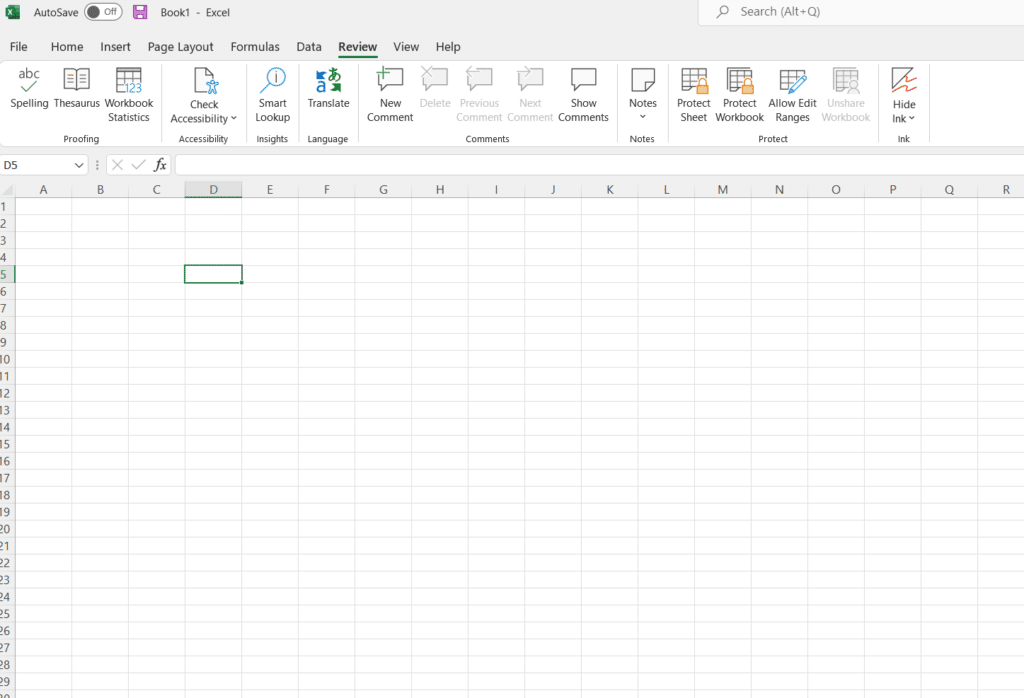How To Remove Password From Excel File? [2023]
Have you ever needed to open an Excel file, only to be greeted by a password prompt? If so, don’t worry.
You can easily remove the password from your Excel file without much hassle.
How Do You Remove An Excel Password?
If you’re looking to remove an Excel password, you can easily do so on both a PC and Mac device.
On PC, you can access the ‘Protected View’ setting in the File menu to disable any passwords that have been applied.
For Mac users, open the spreadsheet with the ‘Open With’ option and select Microsoft Excel from the list of programs to unlock a password-protected file without one.
PC Users

Are you on a PC? Here’s how to remove an Excel password:
- Open the encrypted Excel spreadsheet and enter your password in the text box of the pop-up window.
- Click on the ‘File’ tab in your toolbar, then select the ‘Info’ button from the drop-down menu.
- Choose ‘Protect Workbook’, then click ‘Encrypt with Password’. Finally, delete the password from the text box and hit ‘OK’.
Your file should now be unlocked and ready to use without a password.
Mac Users
To unlock a spreadsheet on a Mac, follow the steps outlined above.
Open the encrypted Excel file and enter your password into the pop-up window. Then, click ‘OK’.
In the upper left corner of your screen, head to ‘File’ in your toolbar and select ‘Passwords’.
Delete both of the passwords from their text boxes and hit ‘OK’, which will remove them from your Excel sheet.
Here Are Instructions to unlock an Excel spreadsheet without a password:
If you’ve forgotten your password, don’t panic – there’s still a way to unlock your Excel spreadsheet without using it.
First, make a copy of the file ( traditionally or using Power Shell) and rename it by changing the extension at the end to ‘.zip.’
Right-click on this .zip file and select ‘Extract All,’ then save the extracted file in your desired location.
Open the ‘XL’ folder and locate the ‘Worksheets’ folder, which contains all of the individual worksheets.
Open each sheet in Notepad and delete any text in between <> signs.
Save these modified XML files back into the .zip file before renaming it with a ‘.xlsx’ extension.
Now open up your Excel spreadsheet without needing to input a password!
How to Remove Password Protection in Excel Manually with The Info Feature?
Removing password protection in Excel manually with the Info feature is easy.
To begin, launch Microsoft Excel from the suite and open up the encrypted spreadsheet file you’d like to edit.

Upon opening it, if you have a preset password protection, simply enter said password and click OK.
Then, go to the File tab at the top-left corner of the worksheet and select Info.
Clicking on Protect Workbook will bring up a dropdown menu; choose Encrypt with Password option to clear any existing passwords.
If using Excel 2007 or an older version, go for the Protect Current Sheet and/or Protect Workbook Structure options instead.
This will open an Unprotect Sheet window where you can then delete your password before clicking OK to finish unprotecting the sheet.
With this simple process, you can quickly remove those pesky passwords from your files!
How To Remove Password With the Save As Option?
If you’re looking to remove a password from an Excel file, the Save As option is an easy way to do it.
To start, open the encrypted file and enter the existing password.
Then, go to the File tab on the top left side of the spreadsheet and click ‘Save As.’
A new window will appear – select Tools at the bottom right side and choose ‘General Options’ from the drop-down menu.
This will open a dialog box with an option for encrypted passwords; delete both text fields before clicking OK.
Finally, save your changes by selecting File > Save in the menu bar.
For Mac users, open your Excel file with its known password and navigate to File > Passwords to access a dialog box where you can delete both text fields shown there before hitting OK.
Once done, just like Windows users, make sure to select File > Save to keep your changes.
How To Remove Password from the Top Panel?
You can quickly remove a password from an Excel file by accessing the Protect Workbook panel. To do so, follow these steps:
- Open the File tab on the top-left of the spreadsheet.
- Click Info.
- Select Protect Workbook, which will bring up a drop-down menu.
- Choose ‘Encrypt with a password’.
- Delete any existing passwords in the text field.
- Click OK.
- Save your changes in the File menu.
This simple process is easy to follow and allows you to take control of your data security while also allowing appropriate access to others if necessary.
Make sure you understand these steps before attempting to apply them, as it could cause irreparable damage if done incorrectly!
How To Remove Protection Password from the Review Tab?

Transitioning from the previous subtopic, let’s now discuss how to remove the protection password from the Review tab.
To do this, follow these steps:
- Open the encrypted Excel file and enter your password to gain access.
- After opening the file, select the Review tab on the main ribbon menu of the spreadsheet.
- Then, select the Unprotect Sheet option.
- Enter your password again to successfully unprotect it.
Now that you have removed the protection, you can choose the Protect Sheet option without entering a new password to prevent any unwanted changes from occurring.
Once you are done protecting your sheet, simply click OK and save it by going to File > Save.
How to Remove Password from Excel File with the Home Tab?
Unlocking your Excel document’s protection is easy with the Home tab. To begin, open the worksheet you wish to unprotect and navigate to the Home tab on the main ribbon menu.
Click on the drop-down arrow of Format located in the Cells group. Select Unprotect Sheet from the list that displays and enter your password when prompted.
Once all information has been verified, hit OK and you’re done! No more worries about forgotten passwords – it was really that simple!
With this method, even novice users can easily remove encryption from their spreadsheets in no time at all.
How To Remove passwords from Excel sheets where the password is unknown?
If you’ve forgotten the password to a protected sheet, don’t worry – you can still access it.
To do so, you’ll need the version of Excel 2013 or later because this method only works with those newer versions.
Start by selecting cell A1 in the protected sheet and pressing the Control key + A to select all cells.
Launch a new sheet, select cell A1 of that one, and press Control key + V to paste what was copied from the locked sheet into it – use the Paste Special option ‘Keep Source Formatting’ for an accurate copy.
Through these steps, you will have created another unlocked version of your original sheet!
Here’s how:
- Select Cell A1 in your password-protected sheet
- Press the Control Key + A to select all cells
- Launch another new sheet
- Select Cell A1 of that one and press Control Key + V to paste what was copied from the locked one
- Use Paste Special option ‘Keep Source Formatting’ for an accurate copy
- Enjoy a new unlocked version of your original spreadsheet!
How To Open Password Protected Excel by Modifying the File Extension?
Modifying the file extension can be a great way to open password-protected Excel files. It works by changing the extension of the file from .xls or .xlsx to .zip, which then allows you to access the contents of the file without needing to know the password.
Once you have access, you can open up any relevant worksheets and edit them without needing to worry about entering your login details. This approach works best if there are no other security measures in place, such as macros or encryption.
To modify an Excel file’s extension, right-click on it and select ‘Rename’. Then replace ‘.xls’ or ‘.xlsx’ with ‘.zip’ in the filename.
After this is done, double-click on it and extract its contents into a new folder. Inside that folder should be an XML document containing all of your data; open this document with Notepad or another text editor and make changes as necessary.
When finished, save it back into its original location and change it back to its previous extension (e.g., .xls). You should now be able to open it normally without needing to enter your login information again!







